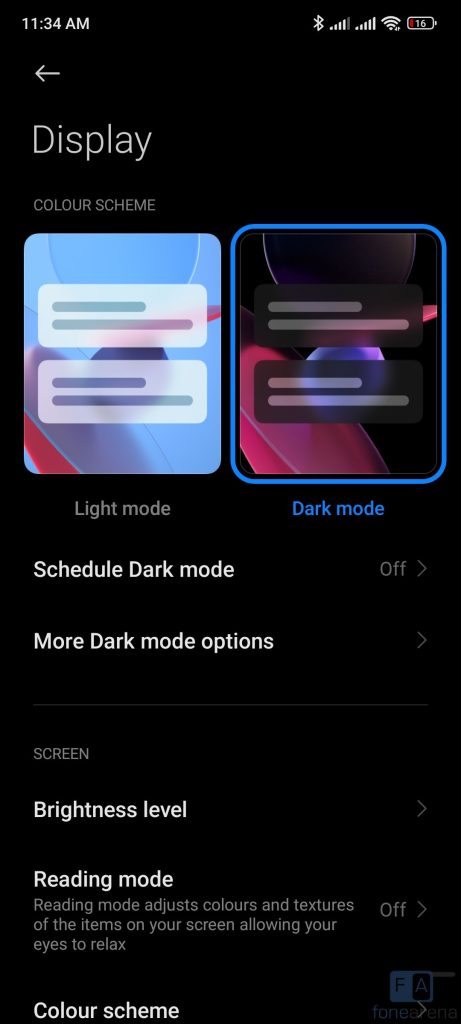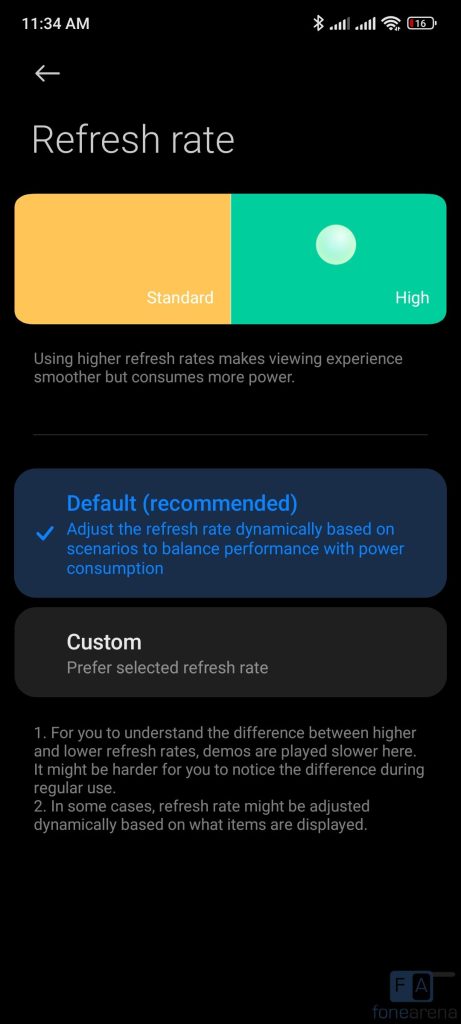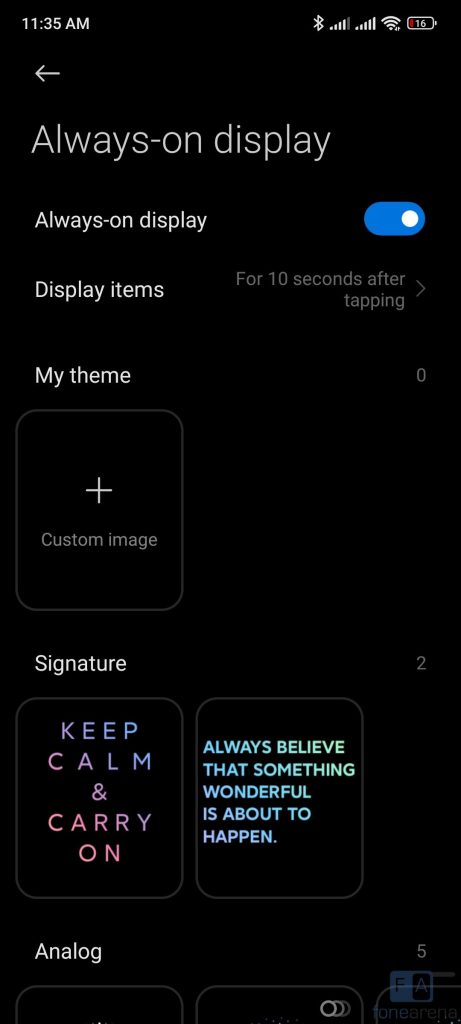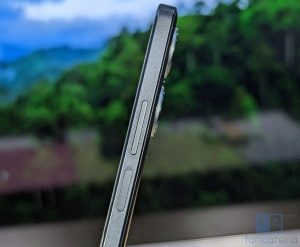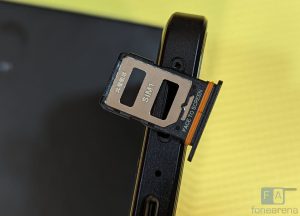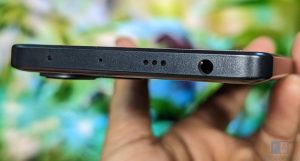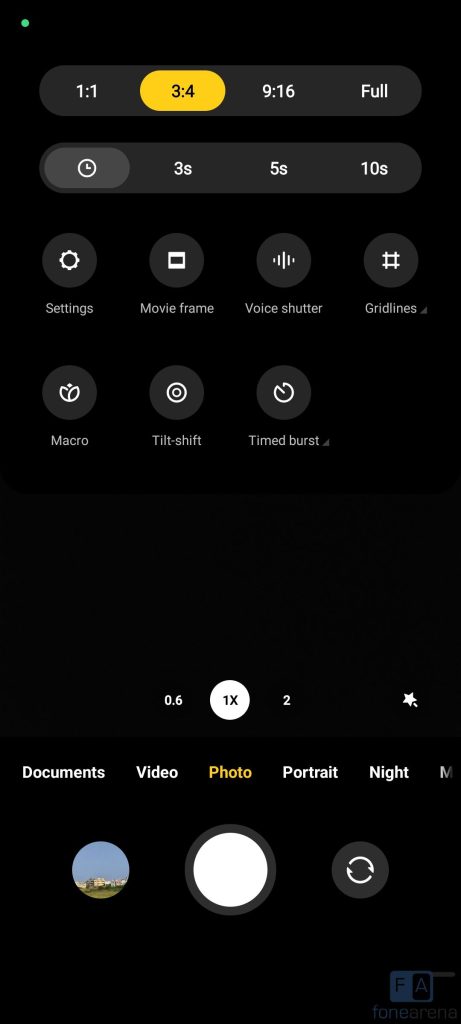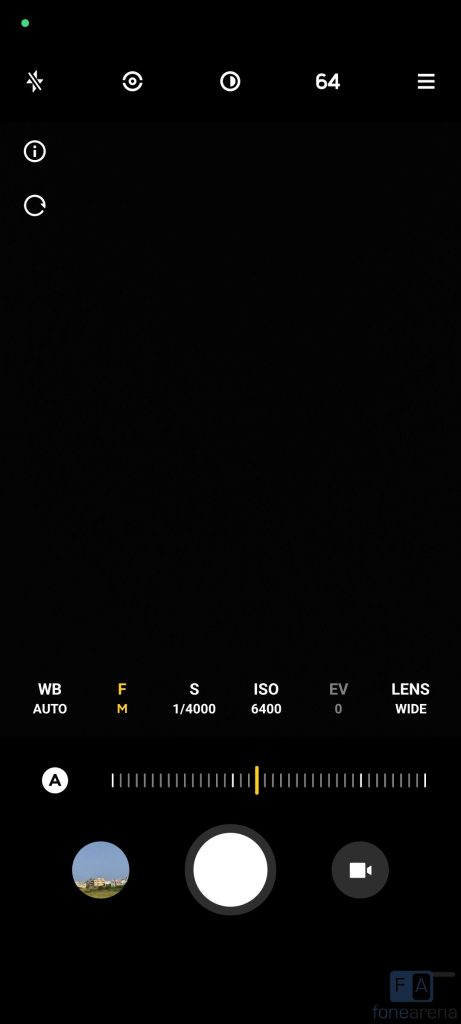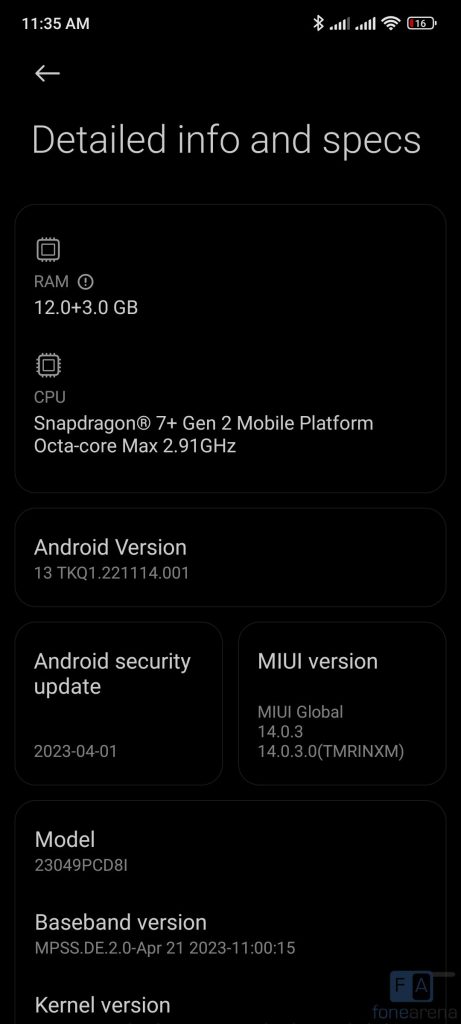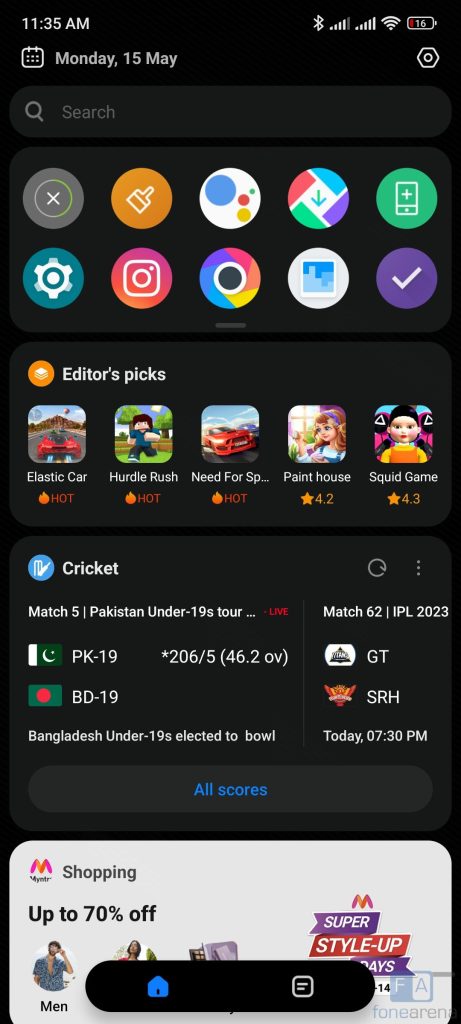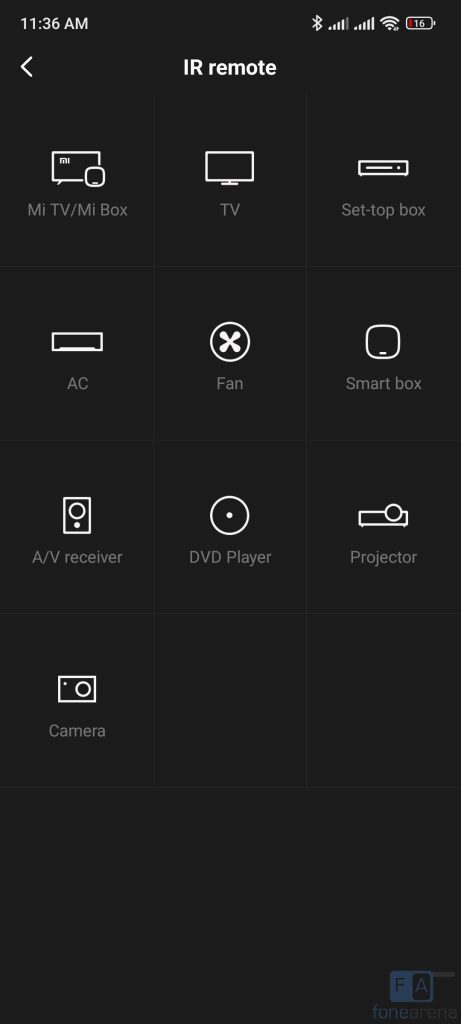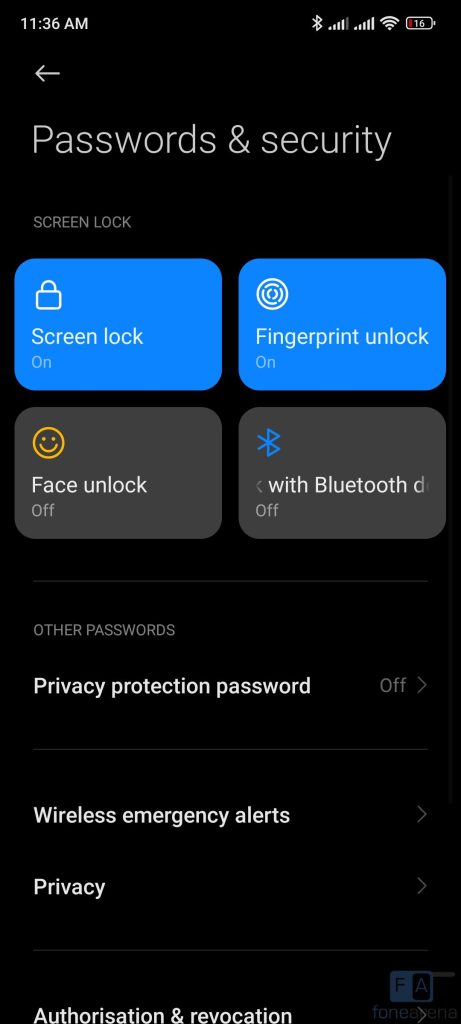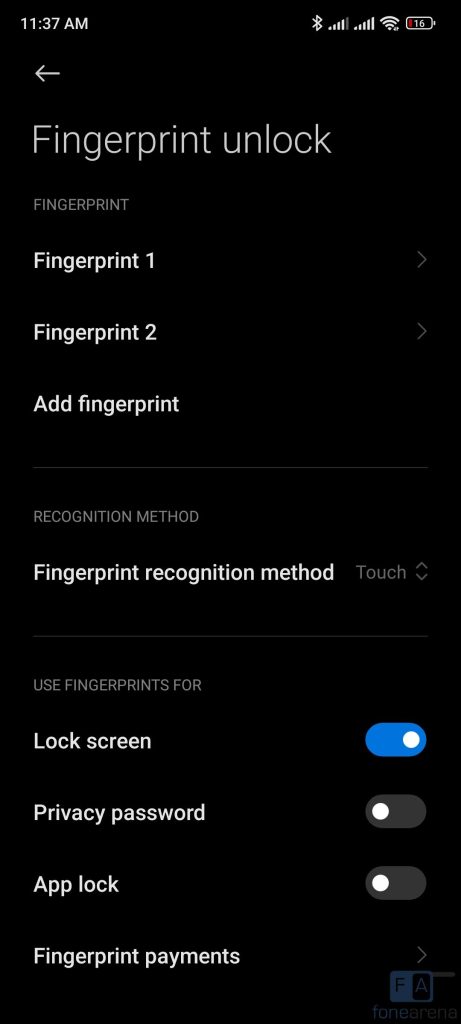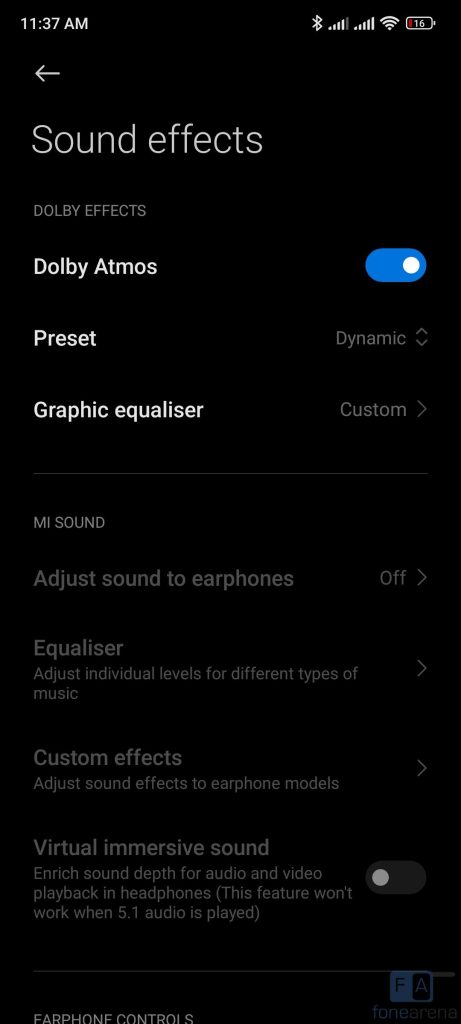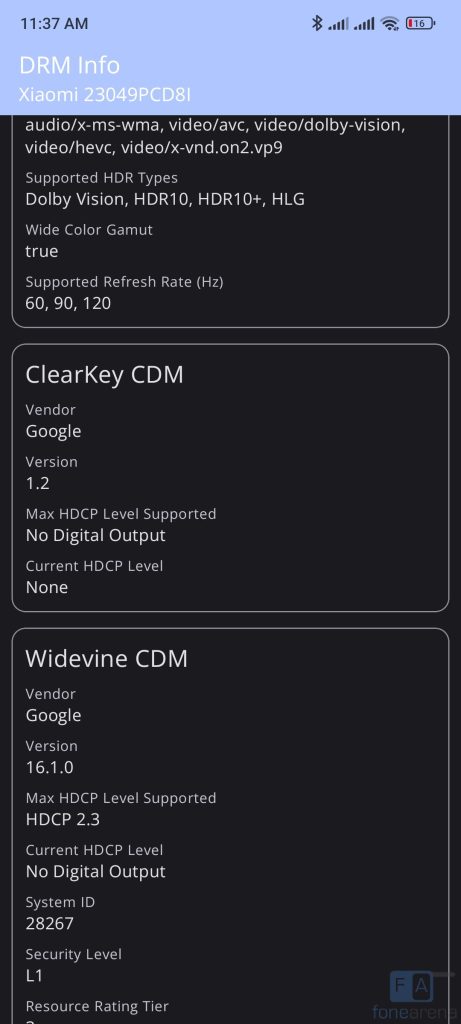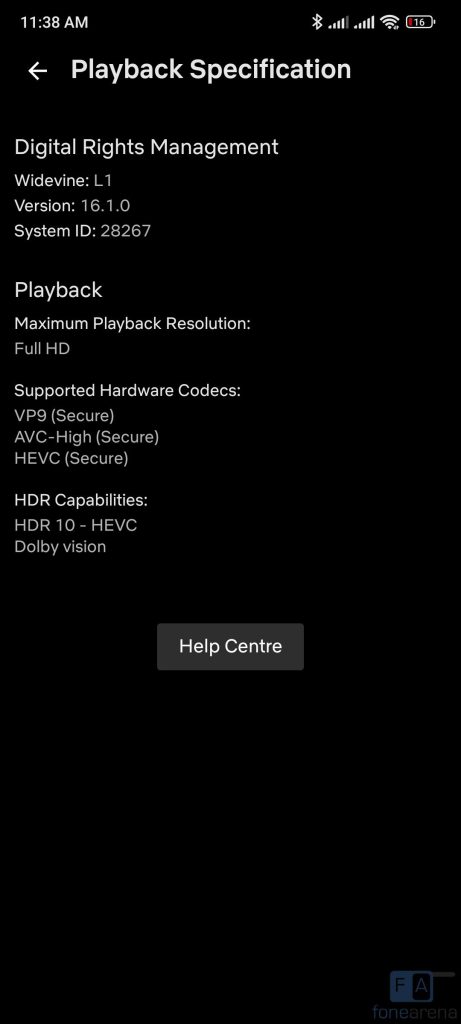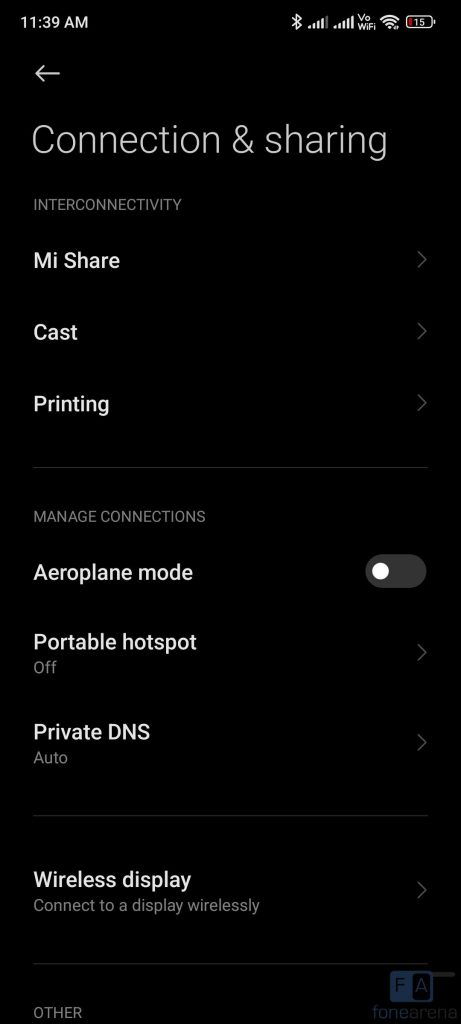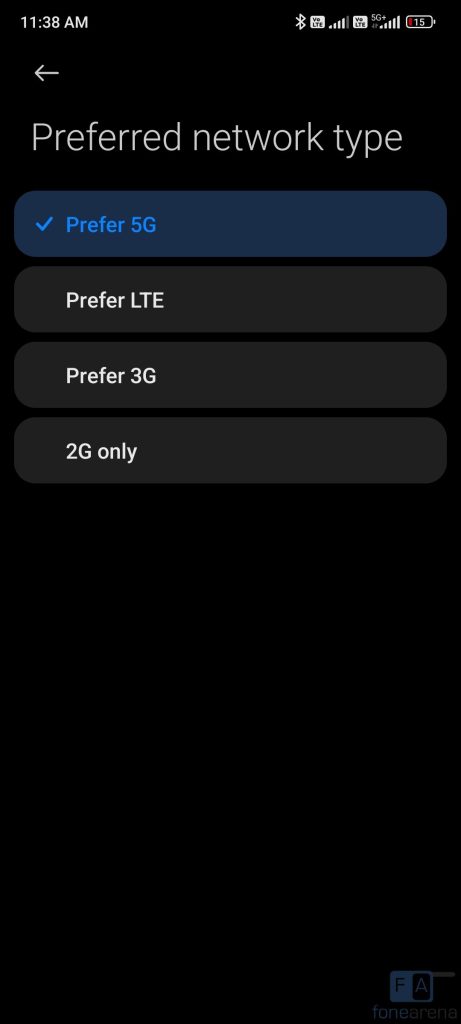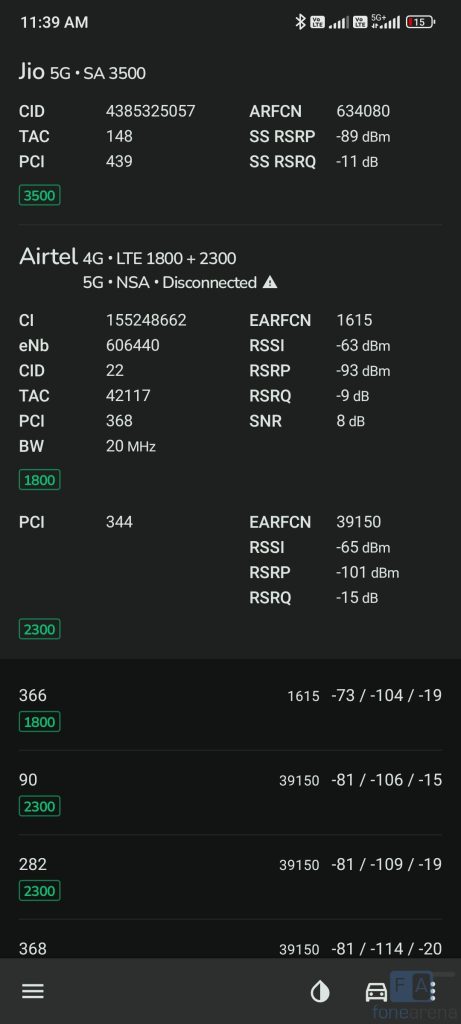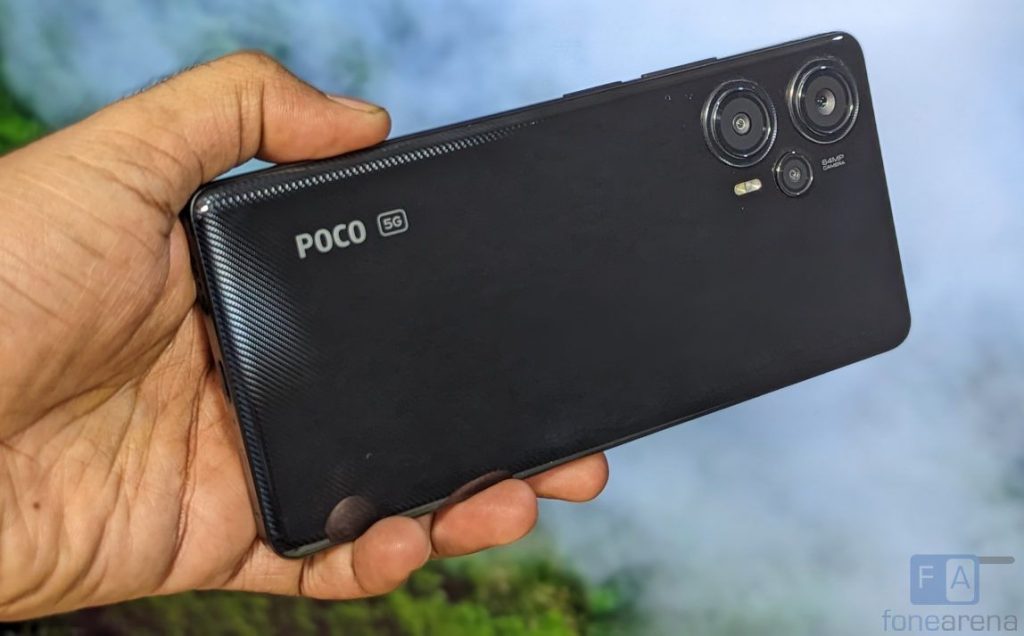
POCO launched the POCO F5 5G smartphone in India last week as the successor to the POCO F4. Like the F4, this has impressive on-paper specs including a FHD+ 120Hz AMOLED display with Dolby Vision, Snapdragon 7+ Gen 2 SoC, a major upgrade from Snapdragon 870, while retaining the 64MP camera with OIS and 67W fast charging. Is the phone worth the price? Let us dive into the review to find out.
Box Contents
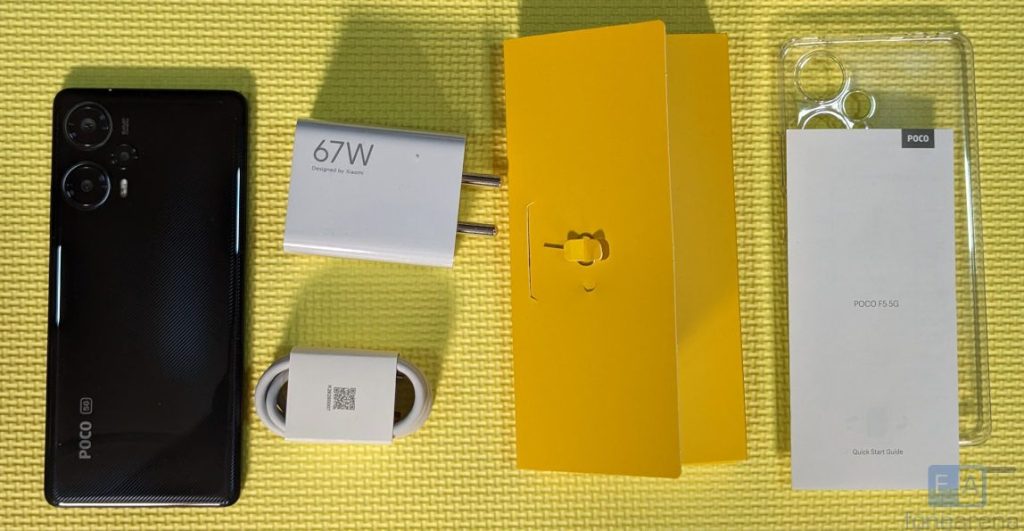
- POCO F5 5G 12GB + 256GB in Carbon Black colour
- 67W fast charger
- USB Type-C Cable
- SIM Ejector tool
- Clear protective case
- Screen protector (Pre-installed)
- User guide
Display, Hardware and Design
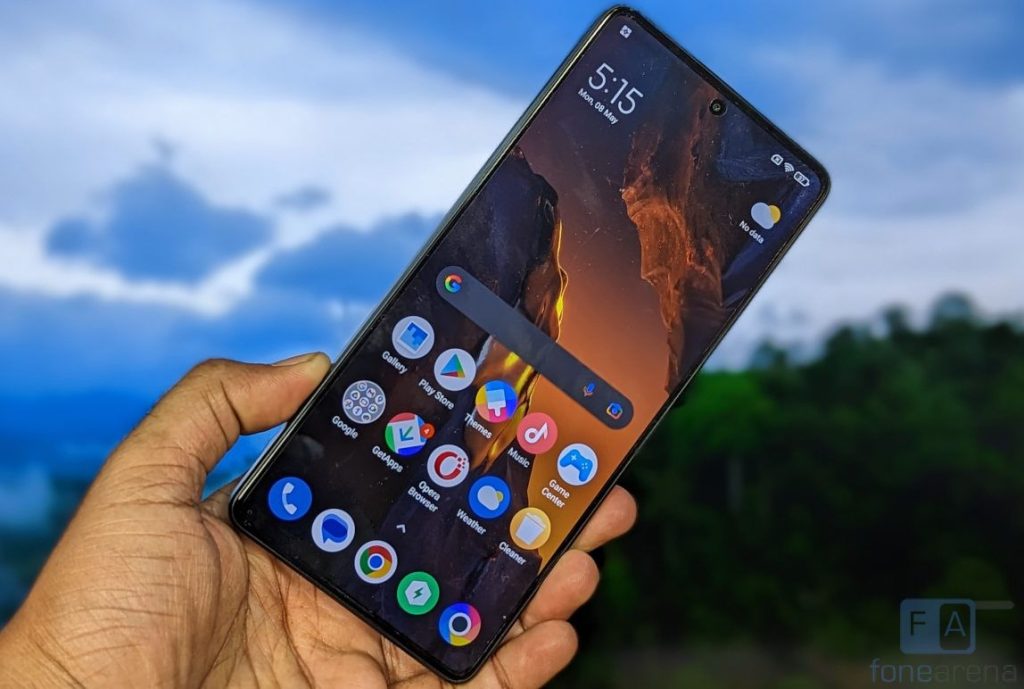
Starting with the display, the POCO F5 has a 6.67-inch Full HD+ AMOLED display with a pixel resolution of 2400 x 1080 pixels, 20:9 aspect ratio and a pixel density of about 395 PPI. This might seem the same as the F4, but this uses a different panel. This has a 1000 nits peak brightness, compared to 1300 nits in the F4. However, I didn’t find any issues when viewing the display in bright outdoors or watching HDR content. It has 100% DCI-P3 Color Gamut, so the colours are vibrant.
POCO says that this is the first phone in the segment with 12-Bit Display that uses a 10-bit panel to show RGB colours and extra 2-bit of other colours, resulting in smoother color gradients and transitions with no color gaps.
The phone has a 120Hz refresh rate display can switch between 30Hz, 60Hz, 90Hz and 120Hz according to the content. It has 240Hz touch sampling rate. When enabled, it offers a buttery smooth user experience, especially when you are scrolling through the UI and when gaming.
The phone has a 1920Hz high-frequency dimming technology. In dark environments where DC dimming can’t work, the phone will automatically switch to 1920Hz PWM dimming mode to maintain accurate colors on display with a more comfortable eye experience. It also has HDR 10+ support, which works for YouTube and Amazon Prime Video and there is Dolby Vision which works for Netflix.
Under the display options, there are different options to adjust colours and contrast based on your preference. There is Dark mode, similar to other MIUI phones. You also get an option to enable dark mode to apps that are installed, but it doesn’t look good on most apps. It also has AI HDR enhancement for videos, but there is no MEMC which was present in the POCO F4. The phone has an always-on-display option, which can be enabled from display settings. The phone comes with Corning Gorilla Glass 5 protection.
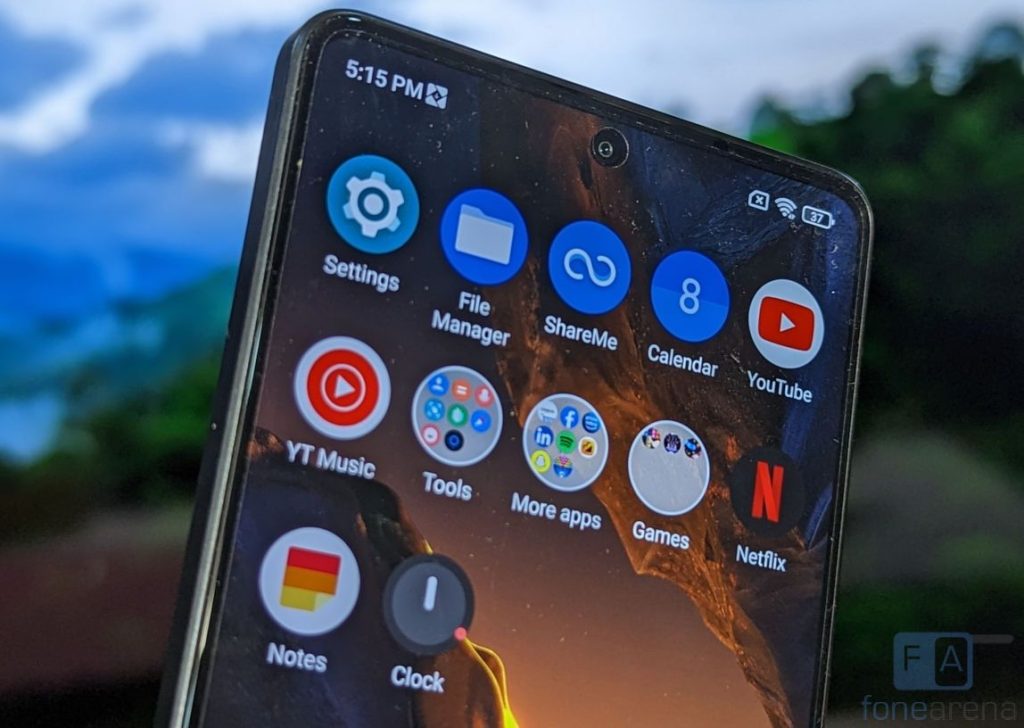
The phone has a tiny punch-hole that houses a 16-megapixel camera, which doesn’t disturb when watching videos since it just occupies a small space. Above the display there is an earpiece on the top edge which also doubles up as a secondary speaker It has a 2.2mm ultra-narrow bottom bezel
Coming to the button placements, the volume rockers and the power button that integrates the fingerprint sensor are present on the right side of the phone. The dual SIM slot, loudspeaker grill, primary microphone and USB Type-C port are present on the bottom. It doesn’t have a microSD expansion slot.
On the top there is a vent for the speaker, secondary microphone and an infrared sensor along with the 3.5mm audio jack which is making a comeback after it was removed in the POCO F4. Since the phone has a plastic frame, you don’t see any antenna cutouts. The flat frame offers a good grip to hold and doesn’t attract fingerprints.
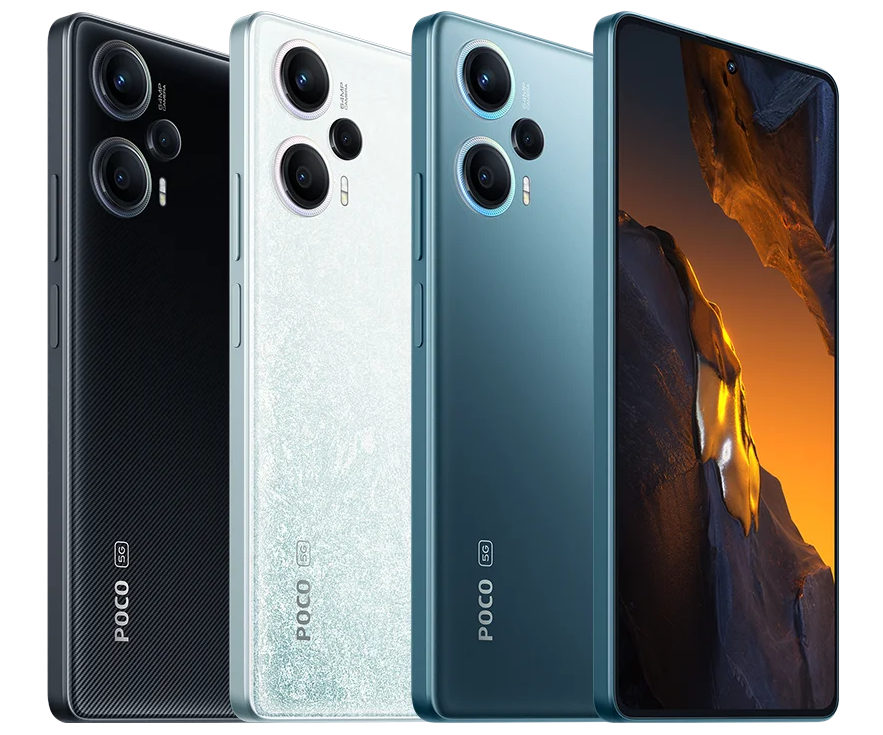
The back of the phone also has a plastic finish, so it doesn’t feel premium. In addition to the Carbon Black colour that we have, the phone also comes in, Electric Blue and Snowstorm White colours. The white variant of the phone has an Iceflake texture. The phone is just 7.9mm thick, and weighs 181 grams even though it packs a 5000mAh battery. The phone has IP53 ratings for splash resistance, so it has mange slight spills or light rain, but you can’t immerse in water.
Camera
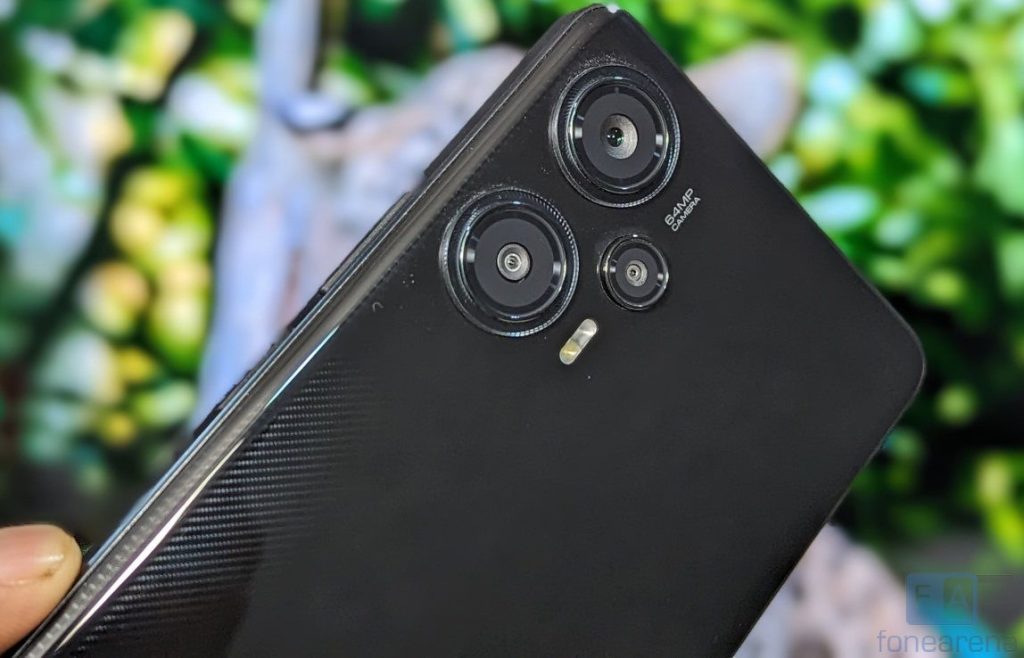
- 64MP rear camera with 1/2″ sensor, f/1.79 aperture, OIS
- 8MP 120° ultra-wide angle camera, f/2.2 aperture
- 2MP macro camera with f/2.4 aperture
- 16MP front camera with f/2.45 aperture
The camera UI is familiar with other Xiaomi or POCO smartphones running MIUI 14. You get all the features such as Pro, Night, 64MP, Short Video, Panorama, VLOG, Slow motion, Time-lapse, Dual video, AI watermark, Long exposure and Pro mode lets you adjust white balance, focus, shutter speed (1/4000s to 30 seconds), ISO (50 to 6400) and option to select main, ultra-wide and macro lens. You can also shoot in RAW in Pro mode and enable focus peaking, exposure verification and more options. POCO has enabled Cam2API by default, so you can side-load ported Google Camera APKs for advanced editing, including RAW capture.
Coming to the image quality, daylight shots came out well with good dynamic range. After pixel binning technology, you get 16MP output from all main camera. HDR shots are better with improved dynamic range. 8MP wide-angle shots are decent, and and the 2MP macro camera is just average, so it is better to shoot close up images in 2X. The 16MP front camera is good, and you get full 16MP output. Lowlight camera performance is good from the main camera, but the ultra-wide lowlight shots are just average.
Check out the camera samples.
It can record videos at 4k resolution at 60 fps, and it also has slow motion 1080p at up to 240 fps. You can also shoot 1080 30 fps videos using the front camera and ultra-wide and 720p with macro camera. OIS in the main camera does its job, and there is a separate ultra-steady mode that uses both OIS and EIS, but it switches to 1080p.
Software, UI and Apps
It runs Android 13 out of the box, with MIUI 14 on top. It recently got April 2023 Android security patch recently. The company has promised 2 OS updates and 3 years of security updates for the phone. MIUI 14 includes more efficient with optimized storage, offers more intuitive interactions, has new on-device privacy features and lets you be more connected than before.
Since the phone has an infrared sensor for remote function, it comes with Mi Remote that lets you control your home appliances easily. Out of 12GB LPDDR5 RAM, you get 10.91GB of usable RAM, and about 5GB of RAM is free when default apps are running in the background. It also has up to 7GB of memory extension or virtual RAM, which you can disable from additional settings. Out of 256GB, you get about 224GB of free storage. It has UFS 3.1 storage, and we got sequential read speeds of 1858.99MB/s.
Apart from the usual set of utility apps, Google apps and POCO’s own set of apps, it comes preloaded with Netflix, Amazon, Facebook, Prime Video, Spotify, Moj, Snapchat Zili and a couple of games. It also asks for additional app installation during setup, which you can skip. You can easily uninstall these apps, but these come up when you reset the phone. Even though there is personalized ads option during set up and recommendations in all the apps, you don’t get any ads in apps.
Fingerprint sensor and Face unlock
Even though the phone has an AMOLED screen, it has a side-mounted fingerprint sensor that quickly unlocks the phone. You can add up to 5 fingerprints. You can also use the fingerprint for app local and payments in apps. The phone also has face unlock.
Music Player and Multimedia
The Mi Music Player is the default music player with usual POCO audio effects and equalizer. It also doesn’t have FM Radio, but comes with Dolby Atmos, and the phone has has stereo speakers that offer an excellent audio experience, and Audio through earphones is good as well.
It has Widevine L1 support, so you can play HD content on Netflix, Amazon Prime Video and other streaming apps without any issues. The phone also supports Dolby Vision for Netflix and HDR10+ for Amazon Prime Video.
Dual SIM and Connectivity
It supports 5G, and has support for 12 5G Bands – n1,n3,n5,n7,n8,n20,n28,n38,n40,n41,n77,n78. It has 5G support for Reliance Jio and Airtel which works out of the box and support has Dual 4G VoLTE. The phone supports carrier aggregation as well. Other connectivity options include Dual-Band Wi-Fi 6 802.11 ax. It has VoWiFi / Wi-Fi calling support, Bluetooth 5.3 LE, GPS, Glonass, Beidou, but there is no NFC support in the Indian version.
It also has USB OTG support that lets you connect USB drives. Call quality is good, and we did not face any call drops and the earpiece volume was loud. It uses MIUI dialer instead of Google dialer.
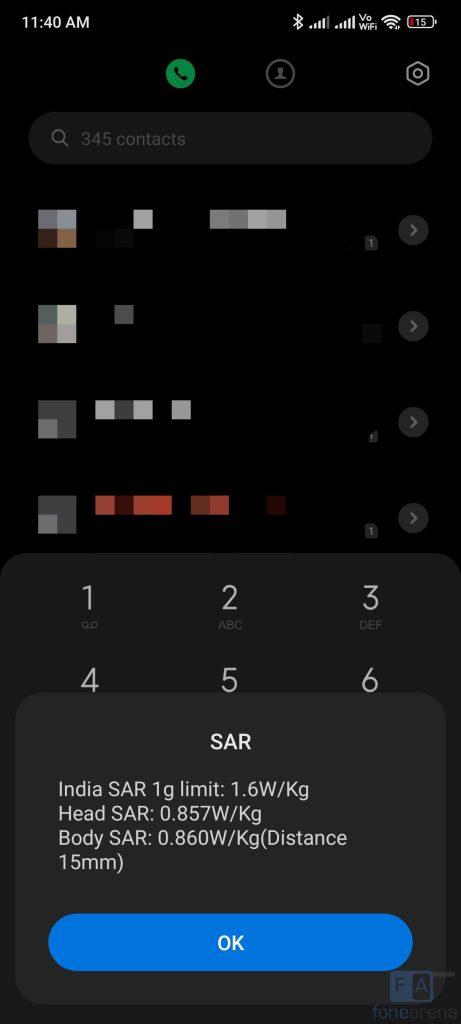
The POCO F5’s body SAR is 0.860W/Kg (Distance 15mm) and head SAR is at 0.857/Kg, which is well under the limit of 1.6 W/kg (over 1 g) in India.
Performance and Benchmarks
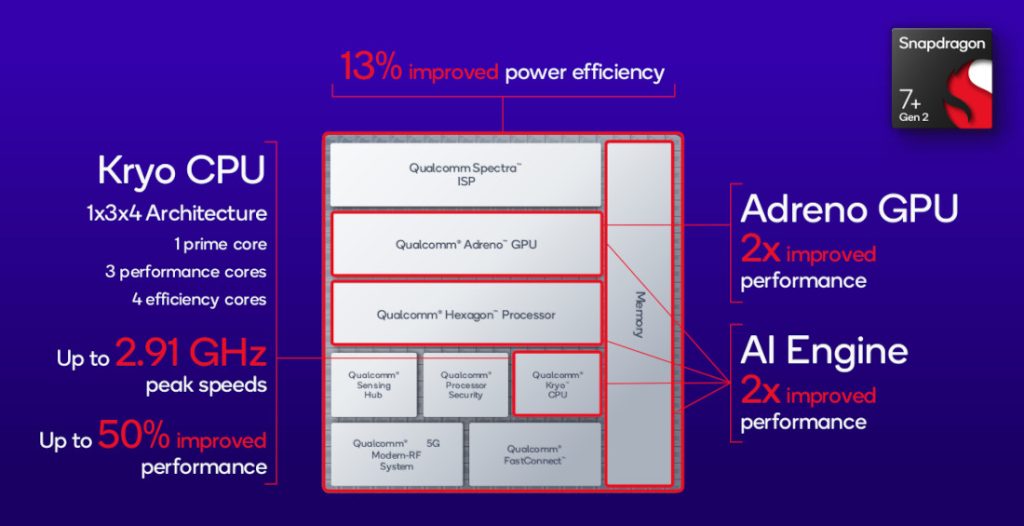
This is the first phone in India to be powered by Snapdragon 7+ Gen 2 4nm Mobile Platform that uses has a 1+3+4 architecture, same as the Snapdragon 8+ Gen 1. This has 1 x Kryo Prime CPUs (Cortex X2-based) at up to 2.91GHz, 3 x Kryo Performance CPUs (Cortex A710-based) at up to 2.49GHz, 4x Kryo Efficiency CPUs (Cortex A510-based) at up to 1.8GHz.
The e Adreno GPU promises 2x the performance compared to Snapdragon 7 Gen 1. It offers a smooth gaming performance even in graphic intensive games, and the phone doesn’t get too hot even during long hours of gaming, thanks to vapour chamber cooling with an area of about 3725mm² compared to 3112 mm² in the POCO F4, which translates to about a 19.7% increase in size. It also has 14 layers of graphite sheet covering, 10000 mm²
of total area.
The phone gets a bit warm on intensive gaming, but it doesn’t too hot. We did not face any issues or frame drops in the graphic-intensive games like COD, BGMI and Genshin Impact. It reached maximum 42º in our testing indoors in Wi-Fi, but this might vary outdoors in 5G. That said, check out some synthetic benchmark scores below.
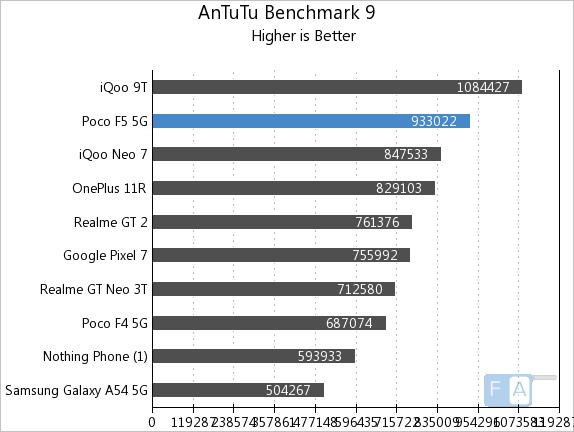
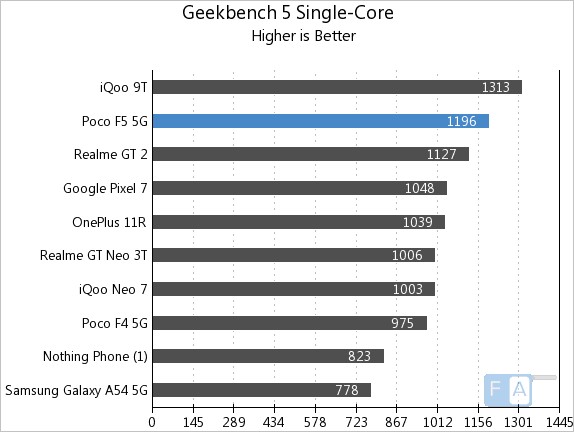
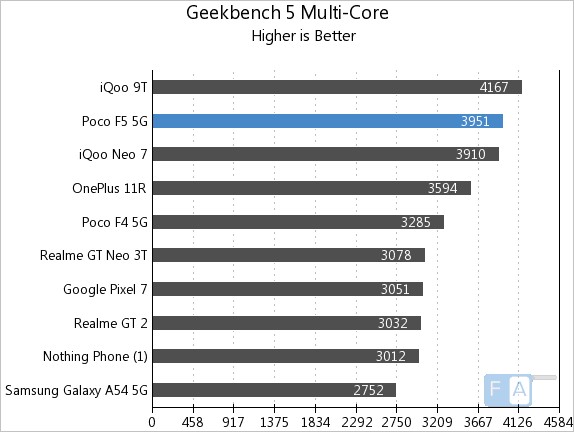
As you can see in the benchmarks, the POCO F5 powered by the Snapdragon 7+ Gen 2 chip outperforms several phones, including the iQOO Neo 7 powered by Dimensity 8200 and is close to Snapdragon 8+ Gen 1’s performance.
Battery life
Coming to the battery life, the phone packs a 5000mAh (typical) built-in battery compared to 4500 in the POCO F5. This lasts for a day even with heavy use on 4G. With minimal use on Wi-Fi, it should last for 2 days. I got over 5 hours of screen on time with over a day of mixed use on 5G and Wi-Fi in 120Hz.
Since the phone has support for 67W fast charging, it can charge from 0 to 50% in about 13 minutes and up to 100% in about 45 minutes.
Conclusion
At a starting price of Rs. 29,999, the POCO F5 is a value-for-money gaming phone that is also good for multimedia. The SoC is the major upgrade that beats the competition in the range, has a bigger battery while retaining the 64MP camera with OIS, Dolby Vision, Dolby Atmos and 67W fast charging. The value king from POCO is now better!
Alternatives
The iQOO Neo 7 is a good alternative, if you prefer the FuntouchOS instead of MIUI and need 120W fast charging, but it misses an ultra-wide camera.
Pricing and availability
The POCO F5 is priced at Rs. 29,999 for the 8GB + 256GB version and the 12GB + 256GB version costs Rs. 33,999. It is available from Flipkart starting from today, May 16th. The company offers 2 years of warranty.
As a part of launch offer, POCO offers Rs. 3000 instant discount with ICICI Bank Debit and Credit cards or exchange. There is also extra Rs. 1000 off in exchange for POCO phones.
Pros
- 120Hz AMOLED display with HDR10+ and Dolby Vision is brilliant
- Smooth performance and good gaming performance without heating
- 3.5mm audio jack, Stereo speakers, Dolby Atmos
- Long battery life with 67W fast charging
- Good camera with OIS
- IP53 water-resistant
Cons
- No NFC
- 2MP macro camera is average
- Plastic back

